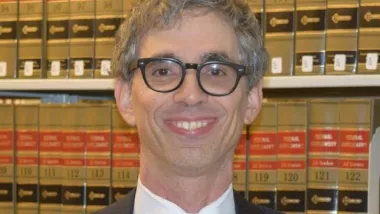A common argument in favor of building sprawl-generating roads and highways is that if we just pave over enough of the United States, we can actually reduce pollution and greenhouse gas emissions by reducing congestion. For example, a Reason Foundation press release cited a report by two University of California/Riverside engineering professors, “Real-World CO2 Impact of Traffic Congestion” (available online at http://www.cert.ucr.edu/research/pubs/TRB-08-2860-revised.pdf ). But if you read the report carefully, its policy impact is a bit more ambiguous.
 A common argument in favor of building sprawl-generating roads and highways is that if we just pave over enough of the United States, we can actually reduce pollution and greenhouse gas emissions by reducing congestion. For example, a Reason Foundation press release cited a report by two University of California/Riverside engineering professors, "Real-World CO2 Impact of Traffic Congestion" (available online at http://www.cert.ucr.edu/research/pubs/TRB-08-2860-revised.pdf ). But if you read the report carefully, its policy impact is a bit more ambiguous.
A common argument in favor of building sprawl-generating roads and highways is that if we just pave over enough of the United States, we can actually reduce pollution and greenhouse gas emissions by reducing congestion. For example, a Reason Foundation press release cited a report by two University of California/Riverside engineering professors, "Real-World CO2 Impact of Traffic Congestion" (available online at http://www.cert.ucr.edu/research/pubs/TRB-08-2860-revised.pdf ). But if you read the report carefully, its policy impact is a bit more ambiguous.
Using complicated modeling, the paper purports to list CO2 impacts for thousands of freeway trips in congested Los Angeles. According to the authors, whenever congestion causes cars to travel less than 45 mph, CO2 emissions increase. Thus, reducing congestion to prevent bumper-to-bumper traffic will reduce emissions. But the same paper asserts that "If moderate congestion brings average speeds down from a free-flow speed of about 65 mph to a slower speed of 45 to 50 mph, this moderate congestion can actually lower CO2 emissions." (Id., p. 9). Moreover, CO2 emissions increase quite rapidly at speeds above 65 mph. (Id., p. 11).
So do these apparent facts support an avalanche of new or widened freeways? Not necessarily. On most freeways most of the time, people travel at speeds far above the 45 mph ideal. The paper points out that even in notoriously congested Los Angeles County, "speeds around 65 to 70 mph dominate." (Id., p. 13).
It logically follows that even in Los Angeles, it is unclear whether a freeway "improvement" would do more good or more harm. Assuming that the improvement actually reduced congestion,* some highly polluting bumper-to-bumper traffic would be eliminated (good news) but some 45-50 mph trips might be turned into more-polluting 70 mph trips (not-so-good news).
It may also follow that where congestion is less frequent (for example, my current residence in Jacksonville, Fla.) an improved highway would be even more likely to increase pollution than in Los Angeles. Why? Because in Jacksonville, there are fewer slow trips for a road improvement to eliminate. Thus, a freeway widening would be more likely than in Los Angeles to lead to more "bad news" trips (in which speeds increased from 45-50 mph to 70 or more mph) than "good news" trips (in which speeds increased to 45-50 mph from a lower speed).
*Given the amount of controversy over "induced traffic" (the idea that wider roads tempt people to drive more, thus eliminating congestion gains over the long run), I am not sure this is the case.

Planetizen Federal Action Tracker
A weekly monitor of how Trump’s orders and actions are impacting planners and planning in America.

Chicago’s Ghost Rails
Just beneath the surface of the modern city lie the remnants of its expansive early 20th-century streetcar system.

Amtrak Cutting Jobs, Funding to High-Speed Rail
The agency plans to cut 10 percent of its workforce and has confirmed it will not fund new high-speed rail projects.

Ohio Forces Data Centers to Prepay for Power
Utilities are calling on states to hold data center operators responsible for new energy demands to prevent leaving consumers on the hook for their bills.

MARTA CEO Steps Down Amid Citizenship Concerns
MARTA’s board announced Thursday that its chief, who is from Canada, is resigning due to questions about his immigration status.

Silicon Valley ‘Bike Superhighway’ Awarded $14M State Grant
A Caltrans grant brings the 10-mile Central Bikeway project connecting Santa Clara and East San Jose closer to fruition.
Urban Design for Planners 1: Software Tools
This six-course series explores essential urban design concepts using open source software and equips planners with the tools they need to participate fully in the urban design process.
Planning for Universal Design
Learn the tools for implementing Universal Design in planning regulations.
Caltrans
City of Fort Worth
Mpact (founded as Rail~Volution)
City of Camden Redevelopment Agency
City of Astoria
City of Portland
City of Laramie






























